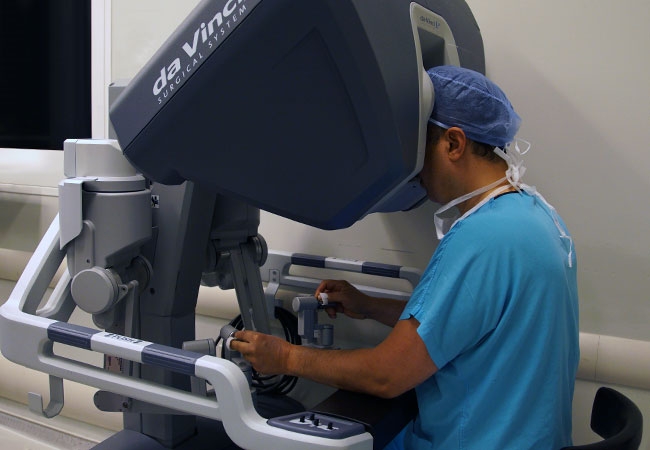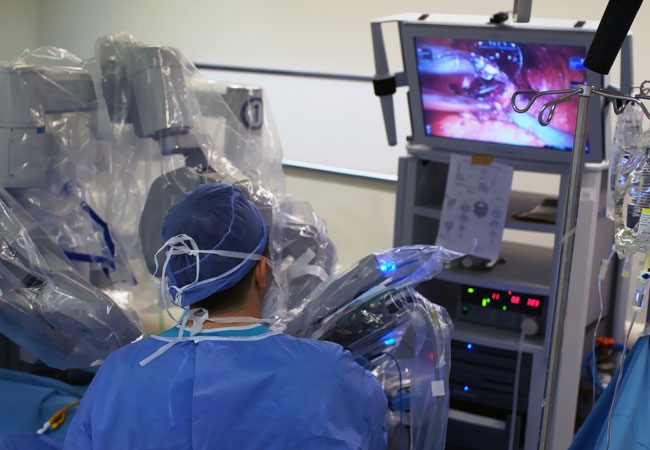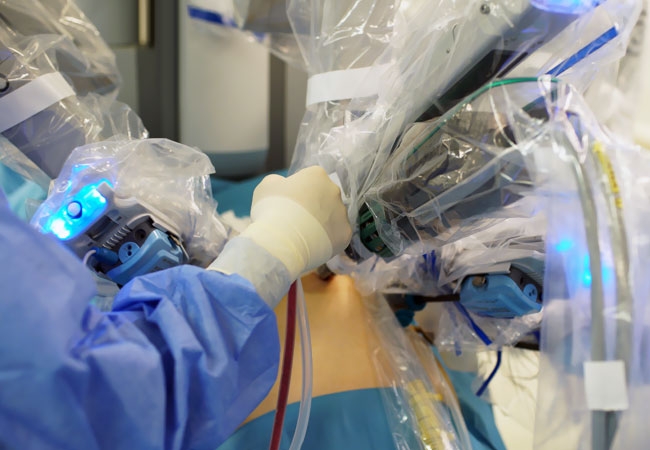Robotic surgery is currently the first line surgical treatment option in modern medicine. It was initially developed as a NASA project aimed to treat remote patients and was approved for use in surgery in 2000. Robotic surgery is performed by a robot named da Vinci and through a console which enables the operating surgeon to operate the arms of da Vinci on the patient.
The Da Vinci robotic system houses an imaging system with advanced technology. The system is made up of two high-resolution fiber optic cameras. This provides the operating surgeon with a 3D view having a sense of depth. Furthermore, the camera magnifies the operation field up to 10-12 times.
Besides the camera system, the surgical instruments used are also multifunctional.
The instruments connected to the arms of da Vinci have a capacity to mimic the movements of human wrist and fingers even with a wider angle of maneuvering capacity without any vibrations.
The main principles for surgeries performed by robotic systems are similar to those of laparoscopic surgery. Small incisions of 1 cm are performed on the abdomen in varying numbers and positions according to the type of surgery. The camera and the instruments are placed inside the abdomen through those incisions with connections to the robot. The operating surgeon directs both the hand instruments and the camera from the console.
The robotic surgery system can also be used in different disciplines suchas gynecology, cardiovascular surgery and ear-nose-throat (ENT). But it is most widely used in urology.
Nowadays, robotic surgery is usually used for the treatment of prostate cancer.
The advanced imaging system and thin arms, high movement capacity and anti-vibration working principle all enable the surgeon to reach and dissect the target tissues during surgery while protecting the other structures that should not get harmed.
This is a great advantage for surgeries concerning the organs in a narrow and closed anatomic space.
As an example, prostate has a very narrow anatomic field for surgery. This leads to a great difficulty in open prostate surgeries with longer surgery times and risks of harm to important regions. A great vision and maneuvering capacity in robotic surgery has overcome those difficulties with minimal complication risks and bleeding as well as shorter operation times. This is the reason why robotic surgery is preferred for the surgical treatment of prostate cancer in the U.S. and in the world.
Smaller laparoscopic incisions during robotic surgery lead to less pain in patients. Patients need a smaller amount of analgesics; furthermore, incision wounds heal faster and patients are discharged earlier with less infection risk. As a result, patients return to normal life more easily and rapidly.

Prostate is located under the bladder sitting on the pelvic floor with important neighboring structures. The nerves alongside both sides of the prostate capsule are important for erection. In addition, muscular structures ensuring urinary continence are in close relationship with both the urinary bladder and the prostate.
MORE
It does not matter which technique is preferred during robotic radical prostatectomy surgery. Some technical points have a great importance in perioperative and postoperative periods concerning the possible side effects.
MORE
Robotic surgery is most frequently used in prostate cancer treatment in urology but it can also be employed in renal cancer treatment. Renal cancers may be diagnosed in different sides of kidneys with various dimensions.
MORE